 |
 |
 |
| |
Simplification to dual therapy containing raltegravir and darunavir/ritonavir in HIV-infected patients on virologically suppressive therapy including nucleoside/nucleotide analogues and ritonavir-boosted boosted protease inhibitors
|
| |
| |
Reported by Jules Levin
14th EACS European AIDS Conference Oct 16-19 2013 Brussels, Belgium
Leonardo Calza,
Lucia Appolloni, Elisa Vanino, Vincenzo Colangeli, Roberto Manfredi,
Marco Borderi, Cristina Puggioli, Pierluigi Viale
Clinic of Infectious Diseases and Pharmacy, S.Orsola-Malpighi Hospital,
University of Bologna, Bologna, Italy
PROGRAM ABSTRACT
Background: NRTI-sparing regimens are warranted in order to reduce the risk of long-term toxicity (such as lipoatrophy and renal or bone diseases). Aim of our study was to assess efficacy and safety of simplification to a dual regimen containing raltegravir and darunavir/ritonavir in treatment-experienced patients during a 12-month follow-up.
Methods: We performed an observational study of HIV-infected patients on suppressive antiretroviral therapy (HIV < 50 copies/mL for at least 6 months) containing two NRTIs and one ritonavir-boosted protease inhibitor (PI) who switched to a dual regimen containing raltegravir (400 mg twice daily) and darunavir/ritonavir (800/100 mg once daily). Patients raltegravir-experienced or with known resistance to raltegravir or PIs were excluded.
Results: As a whole, 71 patients (59 males; mean age 44 + 14 years; range 27-62) were enrolled. Current antiretroviral regimen included tenofovir/emtricitabine in 38 subjects, abacavir/lamivudine in 28, zidovudine/lamivudine in 5, lopinavir/ritonavir in 31, atazanavir/ritonavir in 30, and fosamprenavir/ritonavir in 10; mean duration of current regimen was 38.1 months. Baseline mean CD4 lymphocyte count was 612 cells/mm3, mean total cholesterol was 262 mg/dL, mean triglycerides were 278 mg/dL, mean creatinine was 1.02 mg/dL, and proteinuria (≥30 mg/dL) was detected in 22 subjects (31%). Reason for simplification was toxicity in 56 patients and resistance to NRTIs in 19. After 12 months, 67 patients (94%) showed undetectable HIV RNA (< 50 copies/mL), and the mean change in CD4 count was +123 cells/mm3. Significant (p< 0.05) changes were observed in mean triglycerides (-57 mg/dL) and in the prevalence of proteinuria (15%), while total cholesterol and creatinine did not present significant variations. One patient (1.4%) had virological failure due to suboptimal adherence and 3 subjects (4.2%) discontinued treatment due to gastrointestinal side effects.
Conclusion: In our study, simplification to a dual therapy containing raltegravir plus darunavir/ritonavir showed high efficacy and good tolerability.
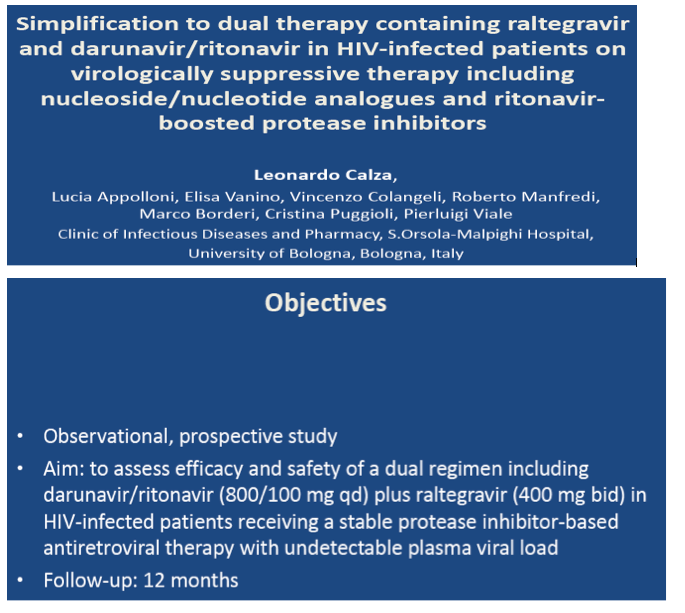

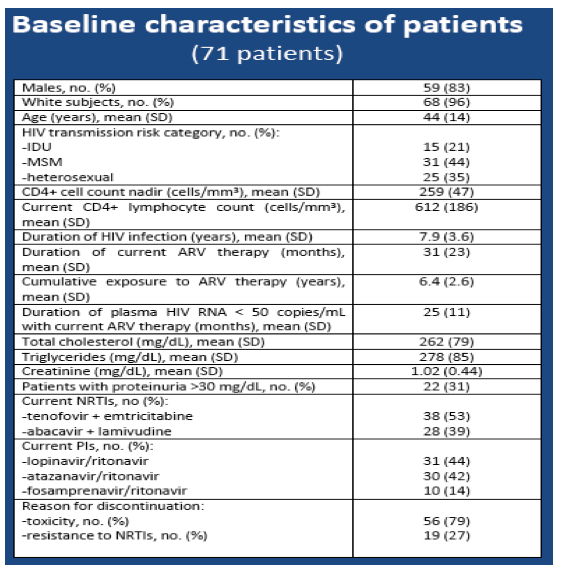
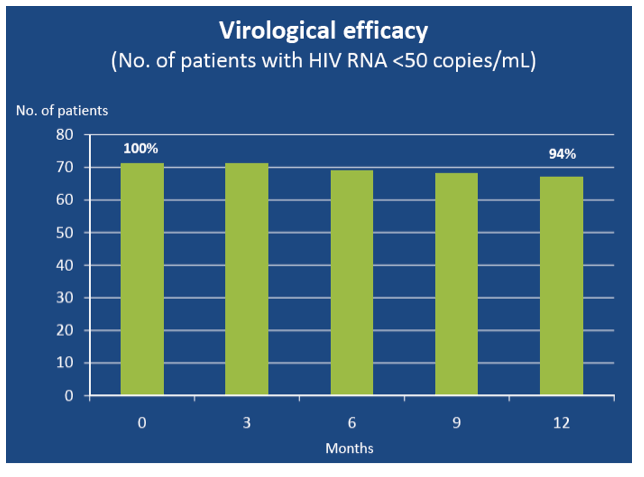
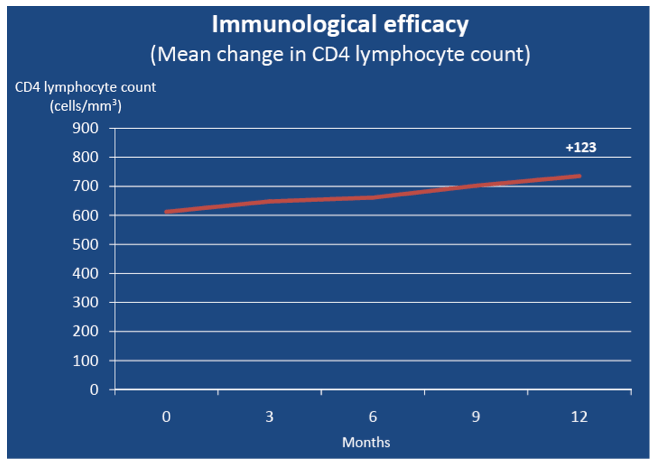
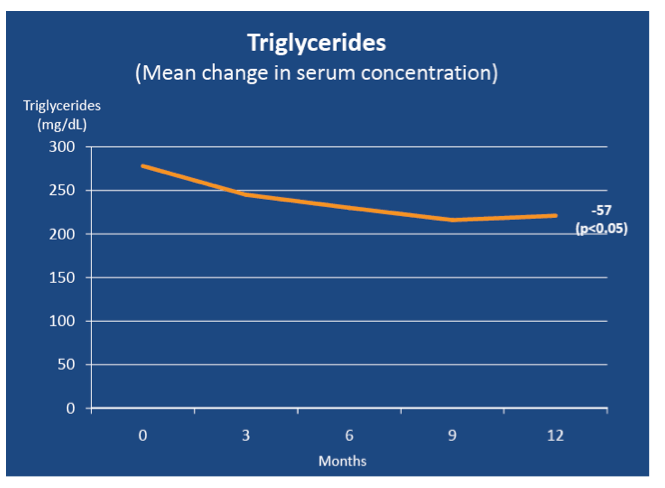
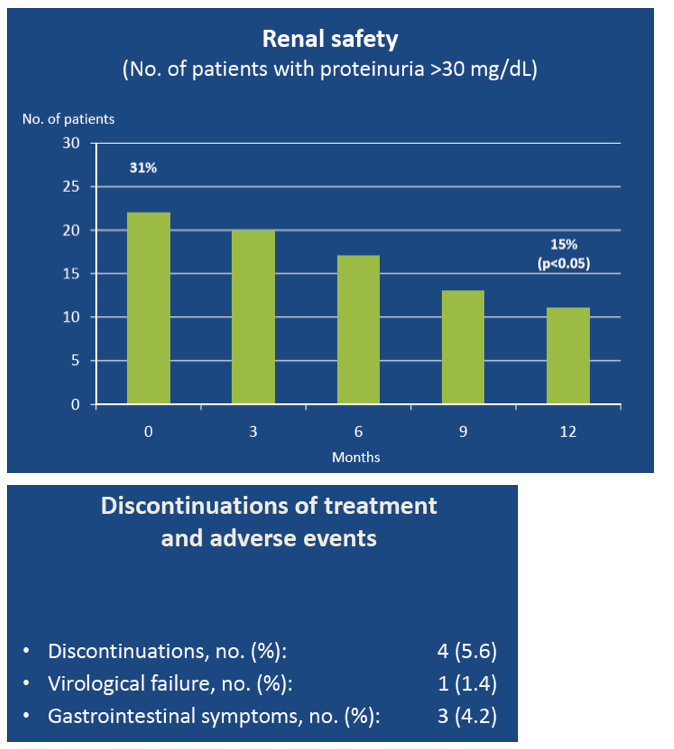
|
| |
|
 |
 |
|
|